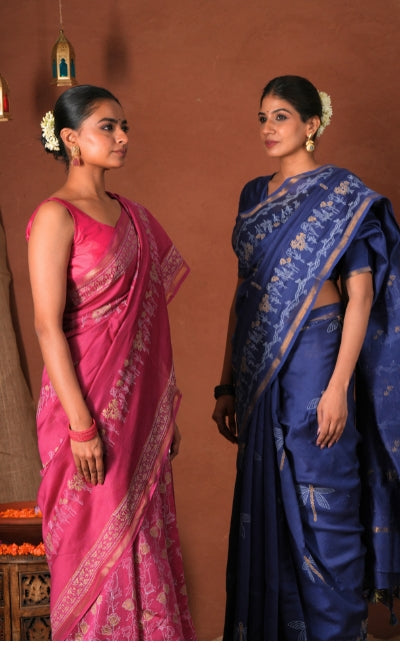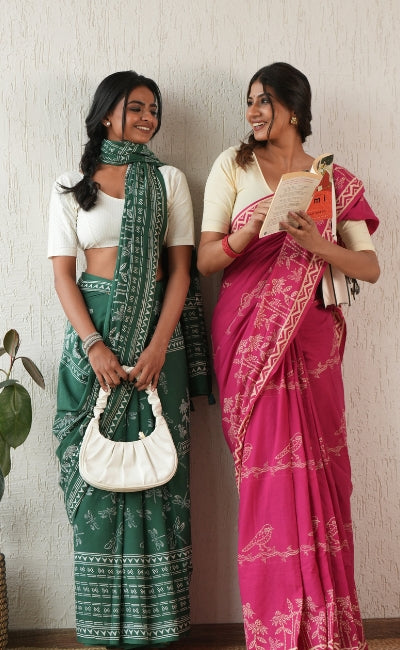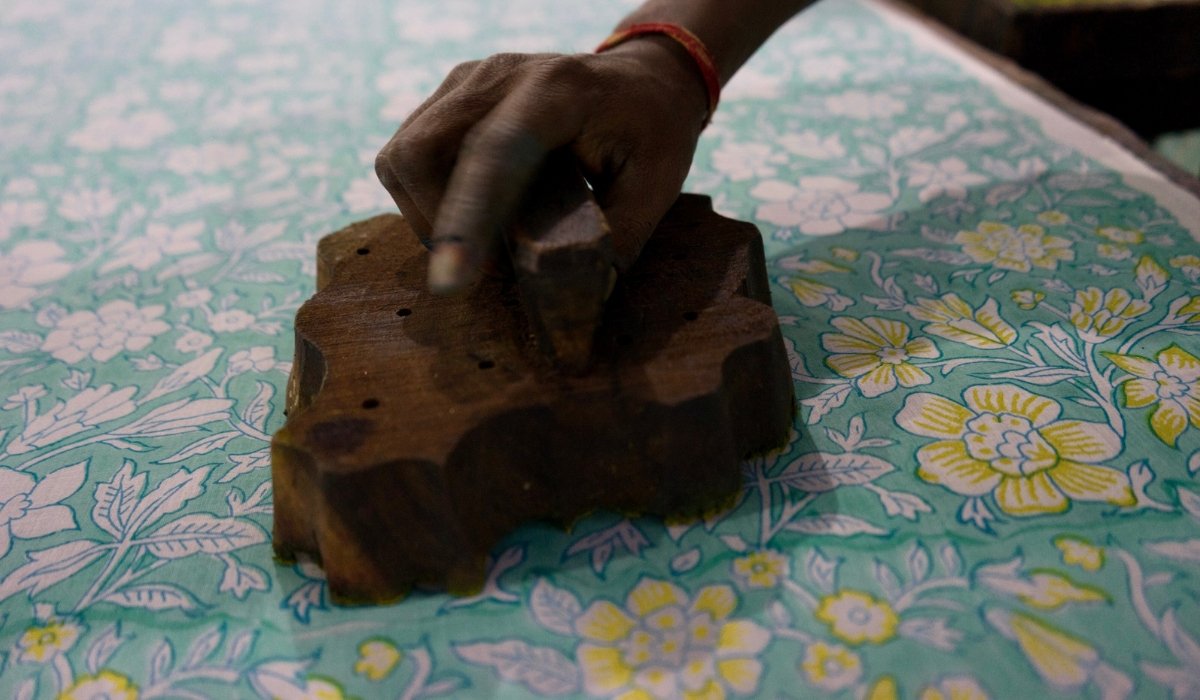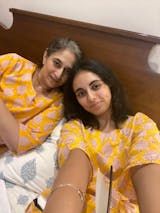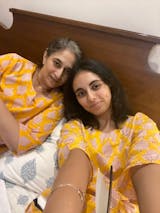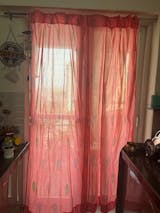Article: Hand Block Printing - A Complete Process
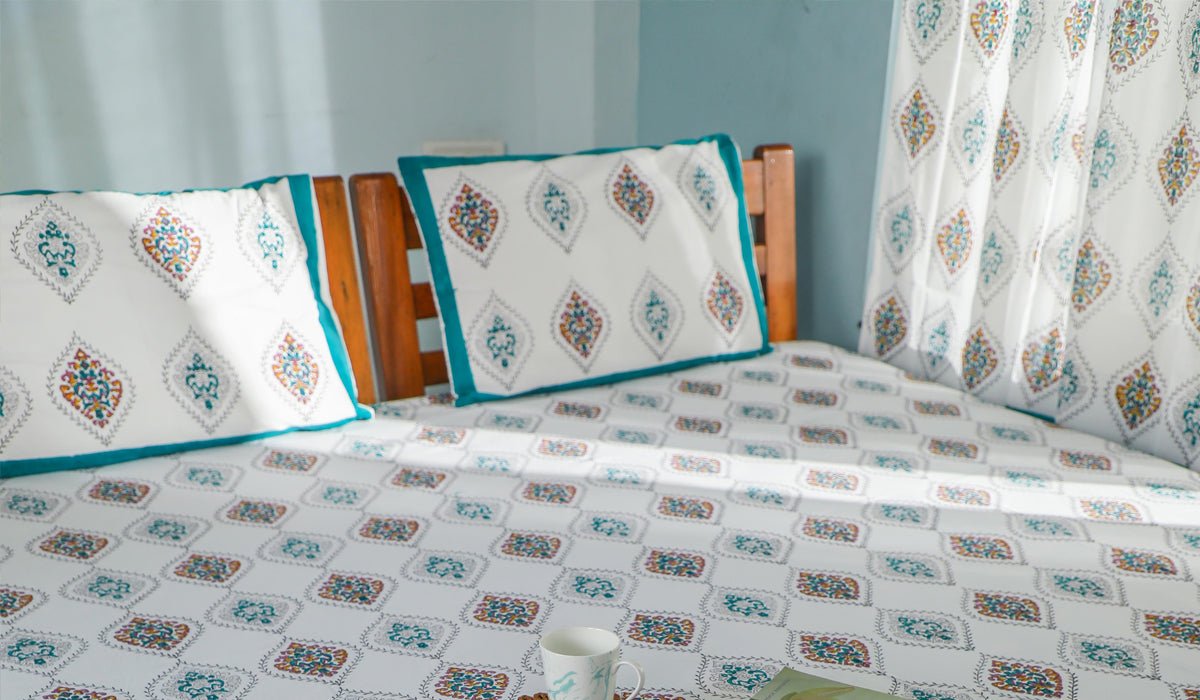
Hand Block Printing - A Complete Process
WHY PRINT BLOCK BY HAND?
Even though it is pretty much exactly what it sounds like, let's break it down. India still uses hand-carved wooden blocks to imprint designs on a variety of home fabrics, including cotton and silk variants, in the ancient technique of hand block printing.
In this particular method, most of the wooden blocks may have intricate details that may be used to sometimes manually print beautiful designs that may cover the entire length of the fabric. The creative process of doing block printing may allow us to create our own patterns and designs. In these kinds of methods, different kinds of wooden blocks carved with intricate details may be used to manually print different kinds of designs.
A SUMMARY, HOW OLD IS THIS ART?
Block printing is said to have its origins in China from over 4,000 years ago. It has then disseminated to other parts of the world. The earliest records of block printing is not known to be on fabrics, but on books that may be known as Diamond Sutra. It is incredible to realize that Rajasthan has employed hand block printing for 400 years (yes, this is an art form that has been around for four centuries and is still used today). Jaipur received hand block printing as a gift from the Chhipa community, which was known to reside in the region of Bagru.
Process Of Handblock Printed Clothes
It's A 4 Level Process that goes into printing the fabric
Designing
Designing the print is the first and most crucial phase in the procedure. The primary sanganeri prints that you'll encounter frequently have an Indian pattern that is influenced by the surroundings, customs, and beliefs of the area. These themes typically take the form of creatures, geometric patterns, or natural phenomena.
Carving
The master craftsman will next trace these designs onto the wooden blocks, which are often made of teak. The artisans will then use their hands to carve the designs into the wood. Usually, blocks between 6 x 8 and 10 x 12 inches in size are used for the carvings. Then, to extend their lifespan, these blocks are soaked in oil for at least a day or two, some of them lasting a decade. Every motif and every detail are carved by hand over a prolonged period of time.
Color Making
Color mixing is a beautiful and enticing technique that involves finalizing the shades before combining colors with dyes to create a variety of tones. The lovely hues that we see on the prints are the result of a skillful blending of color binder, dye, fixer, and water.
Then, depending on the level of color intensity needed for printing, these colors are transferred using different layers into the trays. Once the colours are transferred, they may be modified according to the types of handloom created.
Finally, printing the fabric
Printing on fabrics is done on tables that are 5 to 10 meters long, with 4 layers of fabric placed beneath the printing fabric itself to absorb additional color.
Printing the fabrics is a process that needs to be done right. When we look at the need to distance ourselves and work from home, the party dresses and so-called smart office wear may have seen different sides of the inside of our wardrobe. They also tend to tell us how we can enhance the wardrobe.
Also, as the name suggests, prints are something that may be comfortable enough for us to lounge in. The idea is to remain effortless, and also mould the prints according to the body-type. We also need to look at natural phenomena, and the main idea is for one to remain interesting and elegant in these outfits.
For the print design, the intricate design process may be broken down into four kinds of bitesize stages: the brief, creation, feedback, and also the final artwork.
The pattern is designed to fit in wooden blocks so that it can be constantly printed on the entire piece of fabric. The prints usually feature 3-6 colors, which increases their charm. The more colors utilized, the more appealing and intricate the design, and the more wooden blocks are used.


